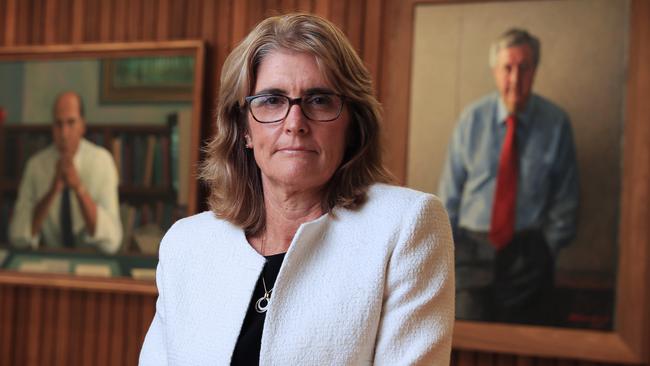Price stability key: RBA deputy governor Michele Bullock
Michele Bullock says maintaining full employment has and always will be a main RBA goal that’s just as important as adjusting interest rates to tackle high inflation.

Michele Bullock says maintaining full employment is no less an important goal for the Reserve Bank as increases to interest rates to slow the economy enough to lower inflation which is still “too high”.
“Just because our inflation objective has been in focus recently, it does not mean that the other part of our mandate – maintaining full employment – has become any less important,” the RBA deputy governor said. “Full employment is, and has always been, one of our two main objectives.”
But if policy makers don’t get inflation under control, the economy faces a “deep and long-lasting recession” which would cause a “substantial rise in the unemployment rate”.
It comes as the minutes of the RBA’s June board meeting – where the central bank announced a 25 basis point lift in the cash rate to an 11-year high of 4.1 per cent - warned that Australia’s goods price inflation fell less than in other countries in April, while services inflation “had not yet shown signs of moderating and the evidence from abroad suggested that it may prove to be persistent.”
Speaking to the Ai Group in Newcastle, she said policy makers need to “think about the consequences for the labour market of not getting inflation under control.”
“Price stability is a prerequisite for a strong economy and full employment,” she said.
“Indeed, it is very difficult to sustain full employment without price stability.”
“If high inflation were to become entrenched in people’s expectations, it would be very costly to reduce later, involving even higher interest rates and a larger rise in unemployment.
“A deep and long-lasting recession would be likely, which would mean a substantial rise in the unemployment rate.”
Ms Bullock said if the nation’s unemployment rate lifted from current levels of around 3.6 per cent to 4.5 per cent by late 2024 as forecast by the RBA, it will be would “still leave us below where it was prepandemic and not far off some estimates of where the NAIRU might currently be”.
“In other words, the economy would be closer to a sustainable balance point,” she said.
NAIRU is the so-called non-accelerating inflation rate of unemployment.
Mr Bullock said the RBA’s goal was to return the labour market - and the market for goods and services - back to a level more consistent with full employment.
She noted this “level” of unemployment is “something like the endpoint in our forecasts”, of 4.5 per cent.
“We think this can be achieved if employment and the economy more generally grow at a below trend pace for a while,” she said.
“This would help to bring demand and supply into better balance and give us the greatest chance of securing sustainable full employment into the future.”







To join the conversation, please log in. Don't have an account? Register
Join the conversation, you are commenting as Logout